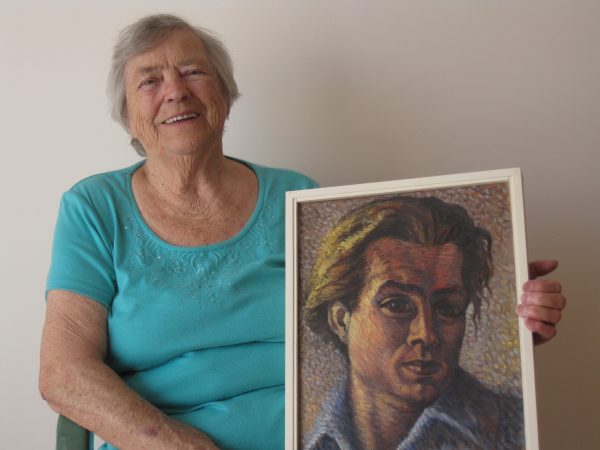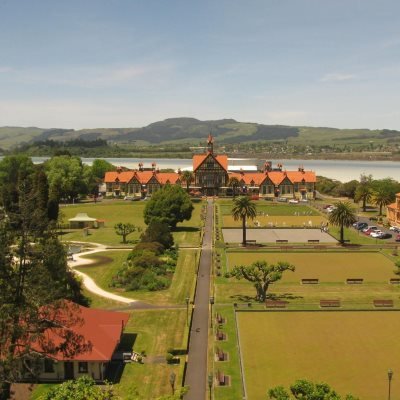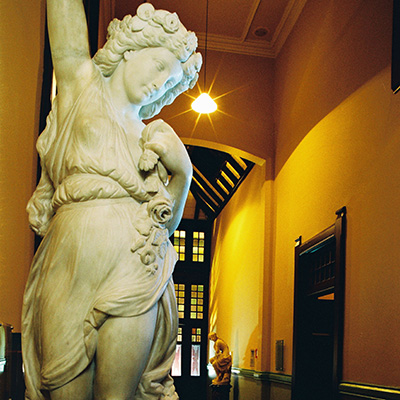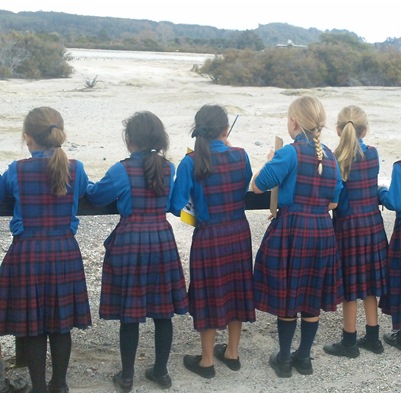Rotorua Museum holds treasure trove of local artist’s never-before-seen work
Thursday, 29 September 2022
After escaping not once, but twice, from the horrors of WWII prisoner of war camps, Walter Bakkenes settled in Rotorua and spent the rest of his life finding peace through his art.
Seventy years later, Rotorua Museum Te Whare Taonga o Te Arawa is kaitiaki of his personal art collection, comprising thousands of items, including 260 framed pieces and countless loose sketches, research, and ephemera. It is the largest art collection from a single artist currently owned by Rotorua Museum.
An exhibition of Bakkenes’ work was one of the last to be held in the Rotorua Museum before it was forced to close for safety reasons after the 2016 Kaikoura earthquake.

Dora Bakkenes holding a self-portrait of her late-husband Walter Bakkenes, 2014.
However, about 80 per cent of the collection remains unseen by the public, partly because it is still being catalogued due to its sheer size.
The collection reflects the diverse range of experiences from Bakkenes’ life and includes war sketches, abstract works, landscapes, nudes, portraits, and reliefs.
Born in 1920, Bakkenes grew up in Amersfoort near Utrecht in The Netherlands. During WWII, he and his father were taken to a labour camp in Steenderen.
He escaped from Steenderen, but in 1944, due to his anti-German views, he was sent to Camp Erika in Ommen where he again escaped and made his way to the Canadian forces, which were liberating Holland’s northern region.
Bakkenes emigrated to Rotorua in 1952 and initially worked as a house painter before joining the Forest Research Institute (now Scion) in 1960.
It wasn’t until 1967, after paying off his house, that he could finally work full-time as an artist, while supplementing his income by teaching art and music.
Bakkenes died in 1986, and his widow, Dora, donated his works to Rotorua Museum in 2014.
Rotorua Museum Collections Curator – Art and Photography, Natascha Hartzuiker, says Bakkenes’ work is fascinating to study as it doesn’t fall into one single genre.
“I have never seen an art collection that spans so many different genres and subjects, from impressionism to abstract, landscapes to nudes.
“Walter experimented with his art throughout his whole life, never quite finding his niche. But it now means that no matter what kind of art exhibition we put together, there is a Walter Bakkenes piece that will fit.”

Walter Bakkenes, Thermal Activity, date unknown. Rotorua Museum Te Whare Taonga o Te Arawa (1977.08.02)
Natascha says she looks forward to sharing more of Bakkenes’ work with the public when the Museum reopens.
“Bakkenes made Rotorua his home after escaping unimaginable terrors in Europe, so it’s fitting that Rotorua Museum is the institute tasked with maintaining his legacy and telling his story.”
Rotorua Museum Kaiurungi Taonga – Collections Lead, Cat Jehly, says the Bakkenes collection is not the only one that contains items that have never been publicly displayed.
“With a total collection of more than 55,000 items, there are thousands of taonga that the public have never seen.
“This can be because we have similar items already on display, there are permissions required or simply because the items are too fragile to install.”
Cat says the Rotorua Museum team is busy designing the exhibitions for when the Museum reopens, and the public will be instrumental in deciding what taonga are included.
“We’re running a series of consultations to give locals an opportunity to get involved and have their say on what they want to see in our Museum.
“From tamariki to community groups and iwi, we want Rotorua Museum to reflect our city’s past, present and future.”
Have your say on Museum exhibition development here











